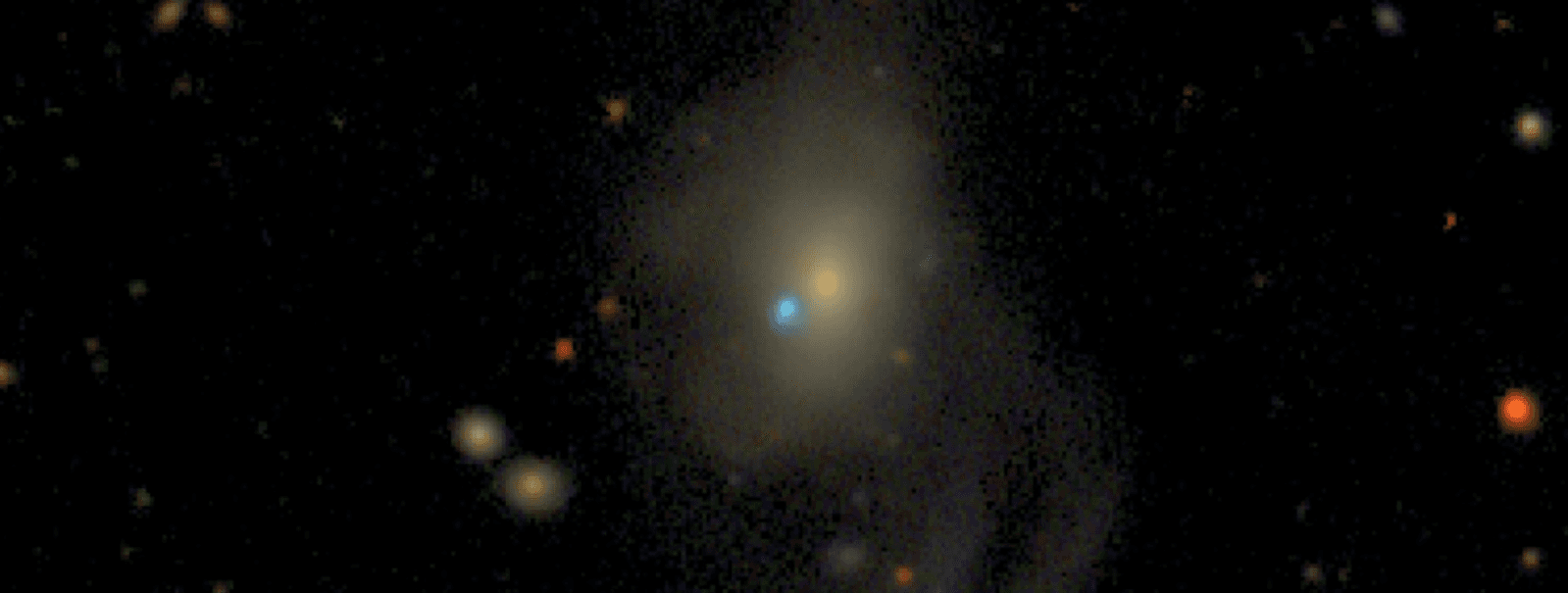Lessons From Stellar Explosions
by Sally Johnson
Theoretical physicist Lars Bildsten explores supernovae extremes

The Author
The Researcher
Studying the Lives of Stars
Stars can undergo rapid changes—such as gently oscillating or exploding and suddenly becoming brighter than their host galaxy. These stars’ unusual behavior intrigues Lars Bildsten, director of the Kavli Institute for Theoretical Physics, and the Gluck Professor of Theoretical Physics at the University of California, Santa Barbara.
Both types of changes allow Bildsten and his collaborators to probe the properties of stars but are also providing deeper insights into how stars shape their environment. Studying the gentle oscillation of stars, for example, allows researchers to infer the mass and radius of a star halfway across the galaxy.
Supernovae arise at the end of the life of a star, and for stars 10x the mass of the sun, they live briefly astronomically—roughly 50 million years—before exploding.

“If you look at a distant galaxy that’s roughly the same as our Milky Way, you will find a new stellar explosion every few hundred years,” says Bildsten. “These supernovae are so bright—a billion times the brightness of the sun—that they outshine all of the other stars within that galaxy for a month.”
New all-sky surveys, such as the Zwicky Transient Facility led by Professor Shri Kulkarni at Caltech, that look at the whole visible sky every night are searching so many galaxies that large batches of supernovae are found every night.
“You need to look at 1000 galaxies to find one bright supernova, but if you’re looking at tens of thousands of galaxies you’re going to see these popping off every night within different galaxies,” Bildsten says. “The galaxy will look much different than the night before because there’s now an extremely bright object sitting within it that wasn’t there last night.”
These supernovae are so bright—a billion times the brightness of the sun—that they outshine all of the other stars within that galaxy for a month.
Lars Bildsten
These surveys now find more than a thousand supernovae per year, which attracted Bildsten’s attention because you can do a lot of new science with large samples. “I became particularly interested in the weird extremes—very faint or very bright explosions,” he says.
To get information about a supernova, observers map out how its brightness changes with time. They also want information about its spectrum, which breaks the light down by wavelength to reveal the chemical composition of the ejected material.
Ejecta blasted out during the explosion travels at about 5,000 kilometers per second. “It’s moving so fast it would cross the radius of the Earth within a few seconds,” Bildsten notes.
Types of Explosions
Prior to the all-sky surveys, scientists had an understanding of two types of explosions. “One kind of supernova features an energy source derived from the collapse at the core of the star to form either a black hole or a neutron star at the very end of its life,” Bildsten explains. “These stars are typically more than 10 times the mass of the sun and explode due to energy that is released near the newly formed neutron star and can eject the rest of the envelope.”
The second is a thermonuclear supernova, a.k.a. Type Ia, which occurs within binary systems in which two stars orbit each other, one of them providing material to a very dense white dwarf companion. “The white dwarf is roughly the mass of the sun and undergoes a thermonuclear transition from being mostly carbon and oxygen to mostly a certain isotope of nickel—releasing more than enough energy to unbind the whole star,” Bildsten says. “So much energy is released that everything is moving faster than the escape velocity and escaping the binary system at up to 10,000 kilometers per second.”
Thermonuclear supernovae are very different because you see very large abundances of elements—silicon, calcium, iron, and nickel—indicative of the thermonuclear fusion. The resulting few months of bright emission is powered by the radioactive decay of an uncommon isotope of nickel produced in the explosion.
These two types of supernovae are coincidentally comparable in brightness. “There are still many important puzzles about them, but they can now be unraveled,” says Bildsten. “We have thousands of samples of each type and can start doing very quantitative work.”
Bildsten and colleagues are currently working on faint events that seem to be powered by thermonuclear explosions, but where the amount of mass involved is one-tenth of the mass of the sun or less. “These are really unusual explosions and we want to know what’s causing them,” he says.
The community also suspects that these small detonations can also sometimes ignite what’s beneath them, “which is typically another solar mass of material,” Bildsten explains. “When it does that, it makes the normal Type Ia supernova that we’ve been studying for the past 50 years.”
What Size Explosion?
A big question Bildsten wants to answer has to do with these possible triggering events. Does mass transfer put a fresh pile of fuel onto its surface and sometimes ignite the new fuel or can it ignite the whole star? “We may well be exploring the cause,” he says. “These may be failed big explosions, but maybe we’re seeing a transition between what causes a small explosion to transition to what causes a big explosion. This is a very active field of research and many observers and theorists are working on it.”
Collaboration is the key to Bildsten’s work—both with graduate students and postdocs, but also with observers. “I’ve been part of an active collaboration with the Zwicky Transient Facility and often engage in helping the observers interpret data, which gets us thinking about what it all means,” he says. “It also gives us an early heads-up about what’s going on—especially as discoveries are made and new puzzles emerge.”